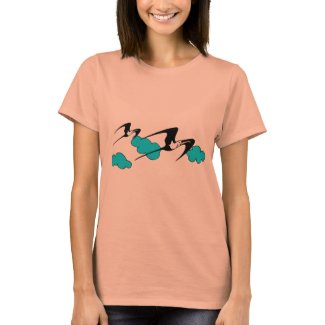Guest Post by Astrid de Wilde
 |
| Peaceful Morning in Raja Ampat |
My guide Charles Roring had chosen this place because in addition to snorkeling you could spot the Red birds of paradise here. To be able to see this you have to get up early. We left at about 6 o'clock. The walk to the observation point takes about 45 minutes. I thought it was pretty tough. It was still dark. The path was difficult to walk on and it went up steeply. But it was worth it. At the observation point you could already hear the bird of paradise. It took a while before they appeared. I thought they would not come soon. But my concerns were for nothing. Not much later I could see the dance of these animals up close. It was beautiful. You must have seen this. The spectacle took about 90 minutes. Then they disappeared into the jungle again.
 |
| Coral reef and fish in Raja Ampat |
Finally, I must call the underwater world because it was really special. As soon as you put your head under water you could admire this world. You could see coral and lots of colored fish in all shapes and sizes, really super nice.
If you want to dive or snorkel, bring mask, snorkel, and fins, as well as underwater camera. The recommended months are October to June. Then there are no waves and you can enjoy even more. If you come during July to Sept, you could still enjoy the beautiful scenery, swim near the guesthouse where you stay and do sight seeing tour to the karst islets.
It was nice to have some fun while traveling to Raja Ampat and rainforest of Tambrauw, please contact Charles Roring to his email: peace4wp@gmail.com. He arranges it all. With him you are in good hands.
To support his works on the empowerment of local people and preservation of marine and rainforest environment, please, buy some of his artworks in the form of printed t-shirts, studio pouch, or even duvet cover by clicking the following link:












